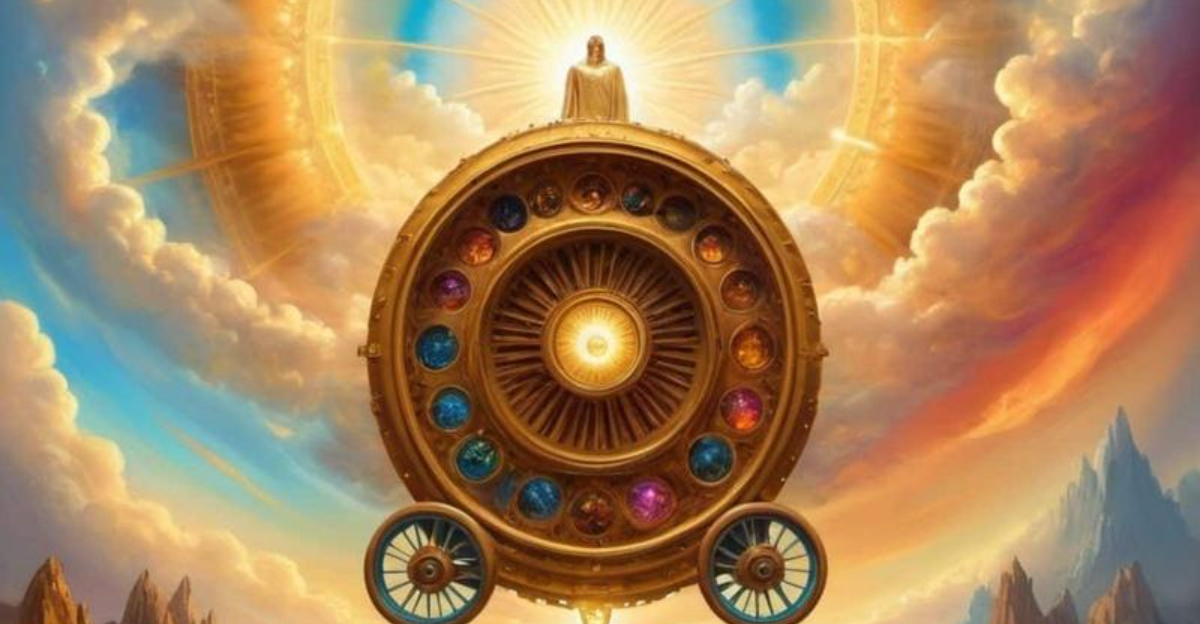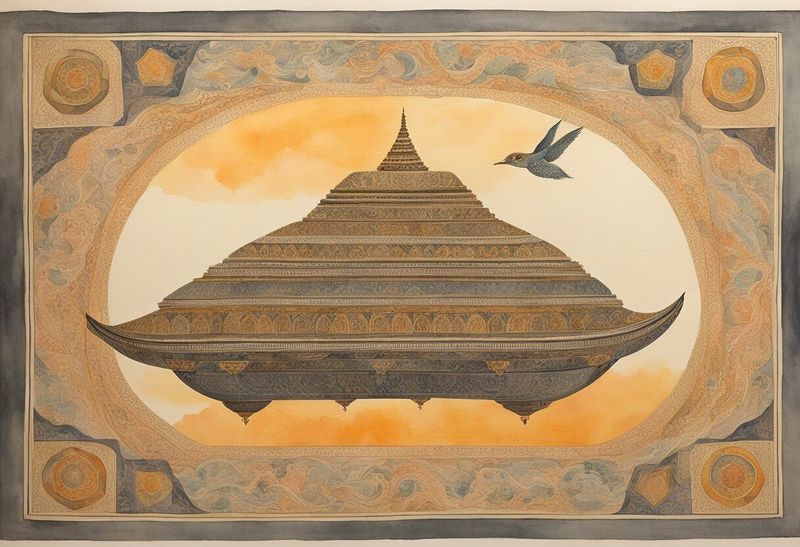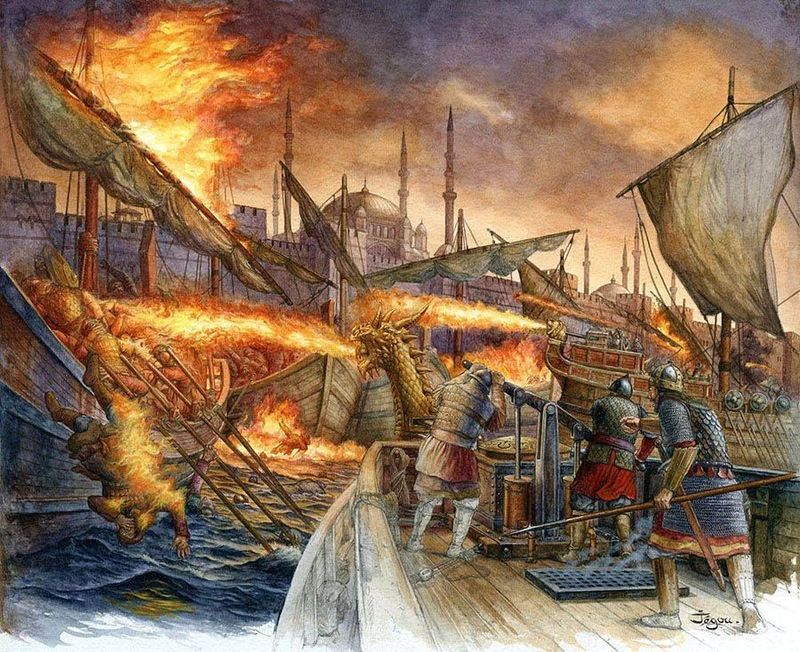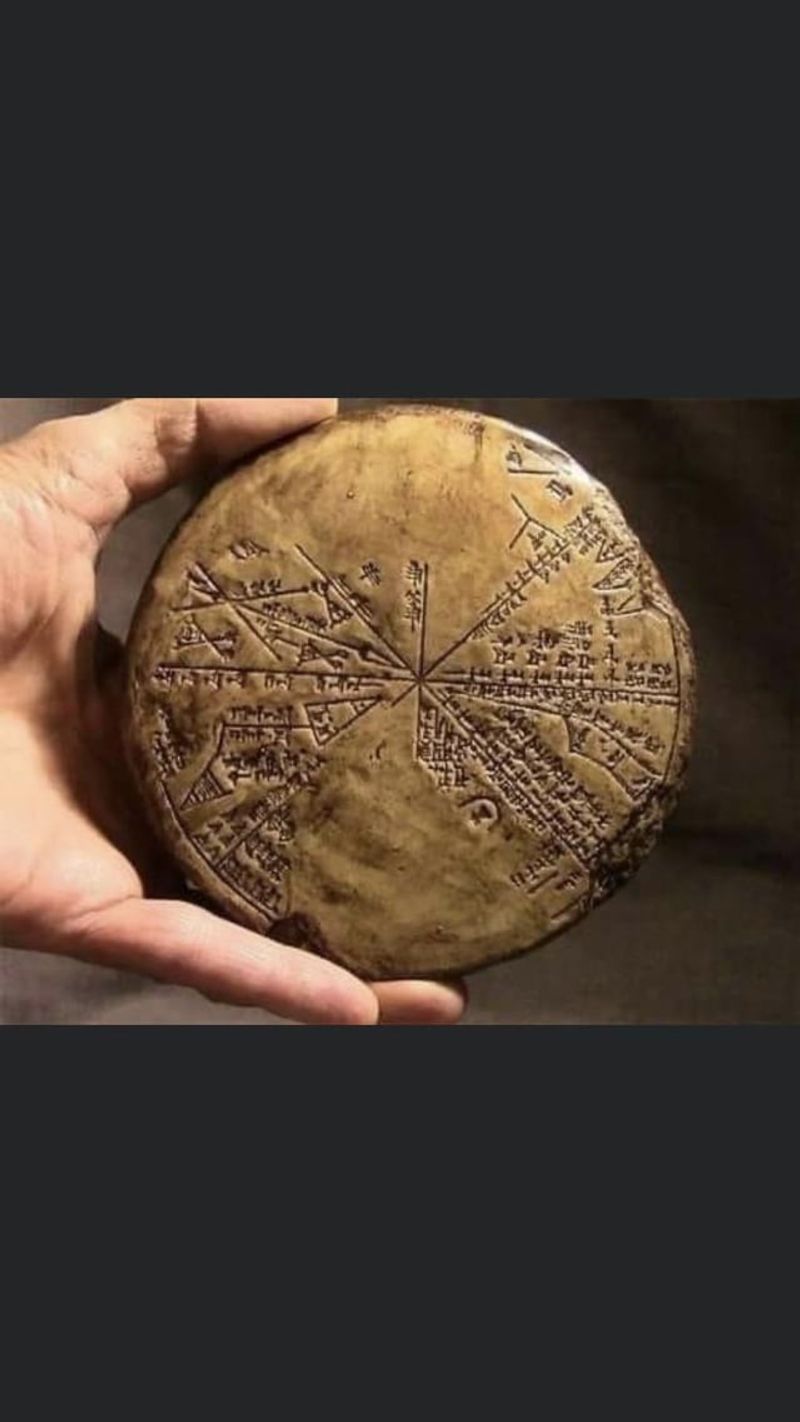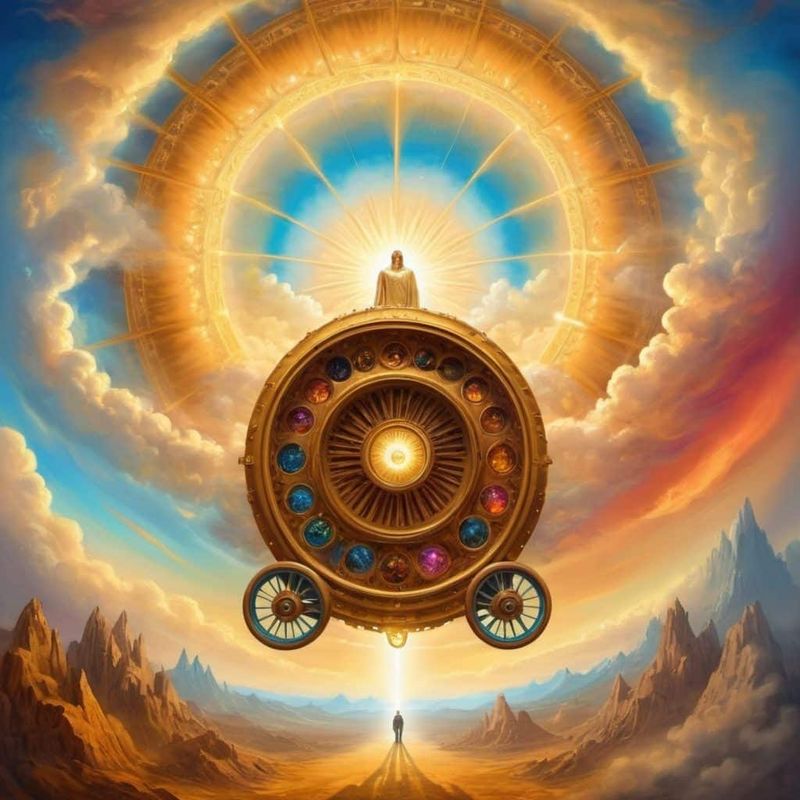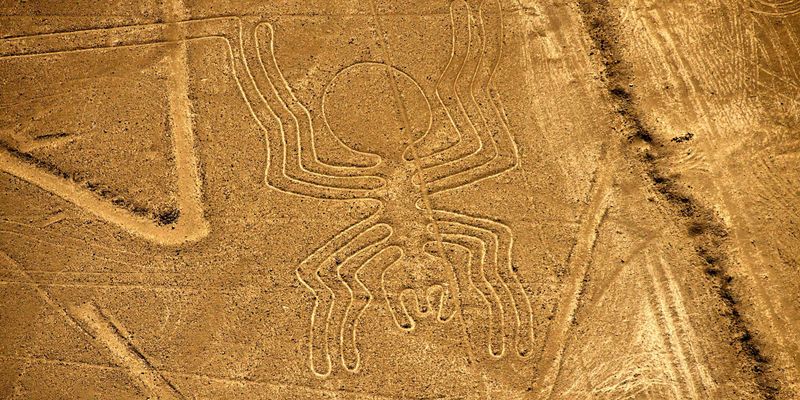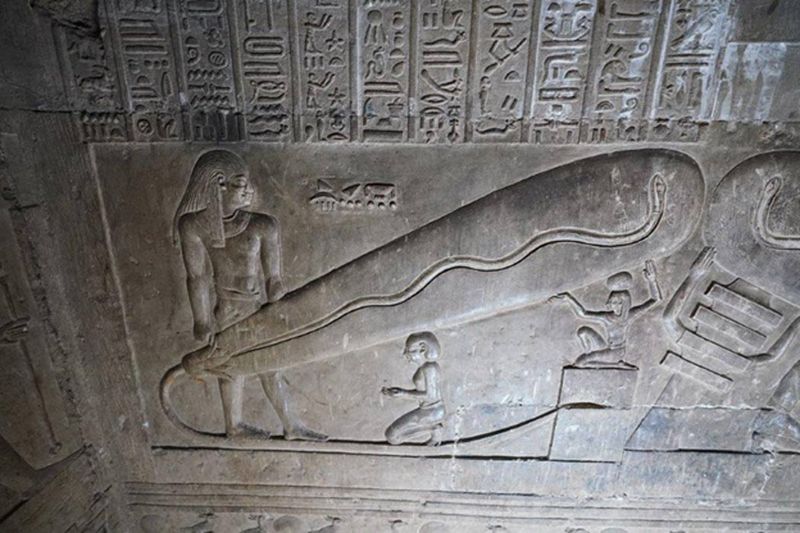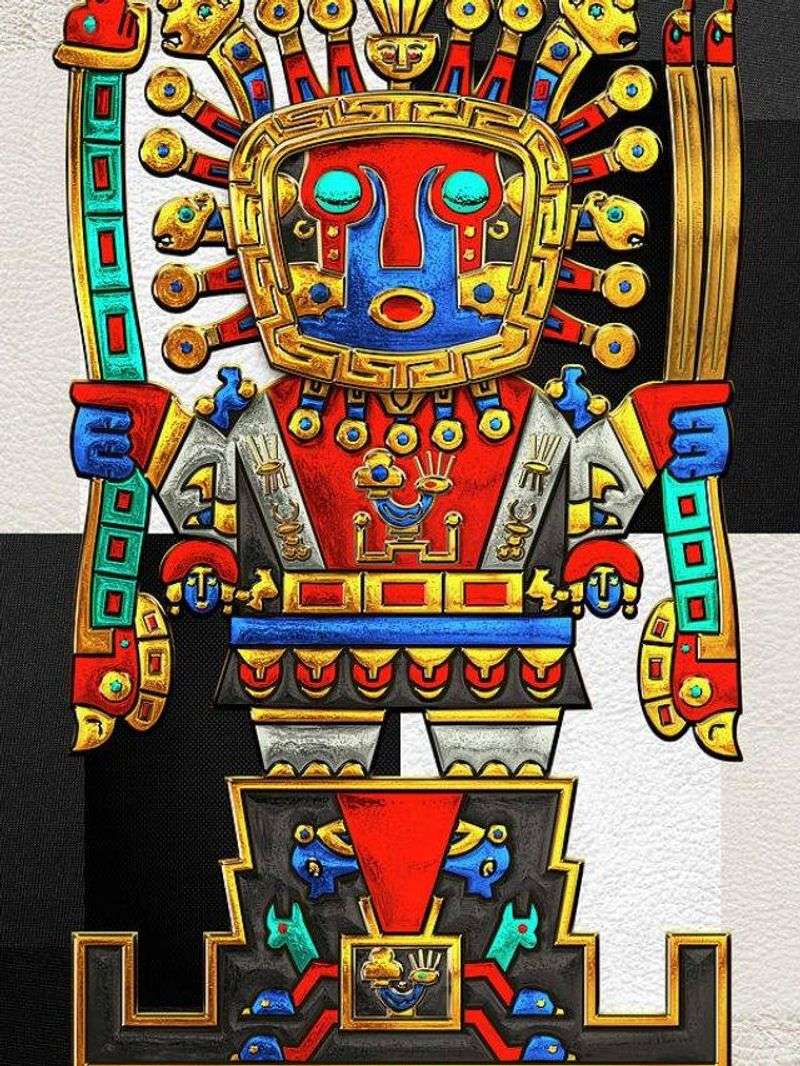From sky chariots to robotic servants, these stories from ancient cultures contain concepts that eerily echo modern science fiction. Whether myths, metaphors, or misunderstood observations, these tales show just how imaginative our ancestors really were.
1. The Flying Vimanas of India
In the ancient Hindu epics, the Mahabharata and Ramayana, such marvels, known as vimanas, are described in rich detail. The tales recount aerial battles that rival modern dogfights and describe advanced weaponry capable of feats beyond imagination.
These texts even detail vertical takeoffs and landings, conjuring images akin to today’s helicopters or UFOs. Were these accounts mere flights of fancy, or did they echo lost technologies?
The enigmatic vimanas continue to intrigue scholars and sci-fi enthusiasts alike, offering a tantalizing glimpse into the innovative minds of ancient storytellers. Some speculate they were inspired by real events, while others see them as pure allegory.
2. The Greek Fire of Byzantium
In the heat of naval warfare, Byzantine sailors wielded a fearsome weapon: Greek Fire. This incendiary liquid could burn fiercely upon water, confounding enemies and igniting imaginations. The exact composition remains a mystery, lost to the sands of time.
Often compared to modern napalm, Greek Fire was a technological marvel far ahead of its era. Its deployment in combat transformed warfare, creating a spectacle both awe-inspiring and terrifying.
Some historians speculate that only a select few knew the secret formula, guarding it with their lives. The legend of Greek Fire persists, a testament to the Byzantine Empire’s ingenuity and the allure of forbidden knowledge.
3. Hephaestus’ Golden Servants (Ancient Greece)
Crafted with divine skill, the golden servants of Hephaestus brought myth to mechanized life in ancient Greek lore. In Homer’s Iliad, these remarkable automata attended the god, moving and speaking with uncanny precision.
They evoke images of modern androids, blurring the line between myth and potential reality. Were they mere products of imagination, or whispers of lost technologies?
The intrigue surrounding these metallic helpers has inspired generations of thinkers, bridging the gap between ancient myth and modern robotics. These tales reflect humanity’s enduring fascination with creating life-like machines, anticipating today’s AI-driven innovations.
4. The Lost Continent of Atlantis
The legend of Atlantis, a civilization lost to the depths, captivates with its promise of high technology and mystery. Described by Plato in 360 BCE, Atlantis was said to be a powerful society swallowed by the sea.
Some view it as a cautionary allegory, a tale of hubris and downfall. Others argue it hints at real historical events, perhaps inspired by catastrophic natural disasters.
Whether myth or memory, Atlantis continues to inspire explorations and theories, embodying humanity’s quest for forgotten knowledge and the allure of lost worlds.
5. The Sumerian Star Maps
Five thousand-year-old Sumerian tablets reveal a cosmic curiosity. These star maps depict planetary bodies and celestial events with astonishing clarity.
Some argue this knowledge was too advanced for its time, sparking theories of ancient extraterrestrial influence or lost civilizations. The precision of these maps challenges our understanding of early human achievements.
Were the Sumerians guided by celestial visitors, or did they possess an innate astronomical brilliance? The mystery endures, inviting both scholarly inquiry and speculative imagination.
6. Ezekiel’s Wheel (The Bible)
In the biblical Book of Ezekiel, a prophet’s vision paints a vivid image of a “wheel within a wheel.” Accompanied by fire and noise, this celestial encounter has sparked interpretations ranging from divine revelation to UFO sightings.
The intricate description suggests a complex, otherworldly mechanism. Could it be an ancient depiction of advanced technology, or is it pure spiritual symbolism?
Ezekiel’s enigmatic vision continues to fascinate, bridging faith and speculation, and challenging us to consider the boundaries between the divine and the extraterrestrial.
7. The Nazca Lines of Peru
Etched into the arid plains of Peru, the Nazca Lines form a mysterious tapestry visible only from the sky. These enormous geoglyphs, depicting animals and abstract shapes, puzzle archaeologists and inspire imaginations.
Were they created for gods or extraterrestrial visitors, or do they serve astronomical or ritual purposes? The grandeur of these designs seems to transcend earthly concerns.
The Nazca Lines remain an enigma, a testament to ancient creativity and the enduring allure of the unknown.
8. The Egyptian “Light Bulb” Theory
In the dim recesses of Egypt’s Dendera Temple, carvings suggest a curious sight: a bulb-like object with a wire and serpent inside. Some enthusiasts claim it’s evidence of ancient electric lighting.
Skeptics argue it’s symbolic of Egyptian mythology, reflecting beliefs rather than technology. Yet, the resemblance to modern light bulbs fuels debates and wonder.
Whether a mere metaphor or a glimpse into lost knowledge, the “Dendera Light” continues to illuminate discussions about the ingenuity of ancient civilizations.
9. The Dogon Tribe and Sirius B
In the heart of Mali, the Dogon people hold celestial secrets. Their knowledge of the Sirius star system, including a faint companion star discovered only in modern times, astounds astronomers.
They claim their wisdom was bestowed by beings from Sirius, bridging myth with cosmology. How did this ancient tribe acquire such precise knowledge without telescopes?
The Dogon’s celestial lore weaves science fiction with anthropology, sparking debates about the origins of their astronomical insights.
10. Viracocha and the Sky People (Andes Region)
In the windswept Andes, tales of Viracocha weave myth with mystery. This Incan god created humanity and traveled across oceans or skies, sharing wisdom of agriculture and science.
Some versions of the myth hint at encounters with sky people, sparking theories of ancient alien influence. These stories blend the divine with the extraterrestrial.
Viracocha’s legend remains a cornerstone of Incan culture, illustrating how folklore can transcend the earthly and touch the cosmic.
11. The Mahabharata’s Nuclear War Descriptions
Amidst the epic battles of the Mahabharata lies a description that echoes nuclear devastation. A weapon unleashing a blinding light, scorching cities, and causing hair to fall resonates with modern nuclear imagery.
Is this poetic exaggeration or an ancient memory of cataclysmic events? The language evokes awe and fear, challenging our understanding of history.
These texts stir the imagination, blurring the lines between myth and possible reality, and inviting us to ponder the depths of ancient knowledge.
12. The Book of Enoch’s Sky Journeys
In the ancient Jewish text, Enoch’s celestial journey unfolds like a cosmic odyssey. Taken to the heavens in fiery chariots, he witnesses the workings of stars, weather, and even time.
The vivid descriptions read like a travelogue of the skies, guided by powerful beings. Is it divine vision or imaginative storytelling?
Enoch’s tales continue to resonate, bridging the celestial with the earthly, and offering a glimpse into the ancient interplay of faith and wonder.
13. Ancient Chinese Sky Dragons and Fire Wheels
Ancient Chinese texts speak of mysterious “fire wheels” and “sky dragons” traversing the skies. These vivid accounts invite interpretations as flying machines or celestial phenomena.
Were these descriptions metaphorical musings or echoes of advanced technologies? The richness of detail fuels centuries of speculation.
These legends reflect the dreams and mysteries of a civilization eager to explore the heavens, connecting ancient creativity with modern curiosity.
